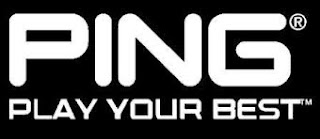Being fitted for golf clubs is not a new thing by any means and was available on a personal scale for many years long before the Ping golf company became the recognised mass market leader in this field in the 1970's and is still considered so from the quality and precision of it's products compared to other manufacturers. However many amateur golfers think that 'custom fit' equipment is only for the Tour Professional or gifted amateur golfer whilst at the same time thinking it will be far more expensive to buy, which would be a wrong way of thinking in both respects.
Irons It is common place to have irons fitted for:
1. Length
2. Lie Angle
3. Shaft Type
4. Shaft Flex / Kick Point / Torque
5. Grip Type
6. Grip Size
7. Swing Weight
Most PGA Golf Professionals have the expertise to custom fit their clients for new golf clubs from scratch for most of the well known equipment manufacturers' club ranges as well as the ability to adjust sets if necessary or to assemble a set from component form. However companies such as PING prefer to adjust their own clubs as they are mostly very difficult to adjust as heads are heat treated during the manufacturing process for strength and durability thus ensuring long term product quality. Callaway also produce very good quality custom fit products for all levels of golfer.
When a client is being measured for new clubs a Golf Professional or Club Fitter will measure the client from wrist to floor to give an idea on club length as well as measuring / taking clients hand / glove size in to consideration. It is then best to have a dynamic fitting on the driving range whereby club face and sole are taped up on several clubs and balls are hit off of a club fitting board. During this process the club fitter will work out which club specifications are most likely to suit the clients needs. To a certain extent through club fitting it is possible to make allowances or adjustments to enable the client to hit the golf ball straighter and possibly longer without the client having to change his or her golf technique.
Drivers Depending on the manufacturer / model there are variations in:
1. Head Size
2. Adjustable Loft angle +/- 1/2 degree
3. Orientation of Club head to Target i.e. Square / Closed / Open
4. Weight Bias
5. Length
6. Shaft Type / Flexibility / Kick Point / Torque / Weight
7. Grip Type
8. Grip Size
9. Swing Weight
Fairway woods / Hybrids tend to be less adjustable than drivers.
Many current Driver models form most manufacturers employ the 'OPTI-FIT' system whereby it is possible for the client to self adjust the drivers settings to suit, before or after a round.
There is a huge selection of shafts to choose from so it is recommended to take the advice of the club fitter on the choice of shaft.
With advances in technology it is currently possible, though only at limited locations, due to the cost of buying a unit, to have your swing and equipment measured on Trackman radar technology. Trackman is the most accurate radar/ monitor available and is the leader in this field. Many of the top tour professionals have their own trackman to work on their golf games namely to make their golf swings more efficient.
From a Basic club fitting point of view the:
1. Correct Length of club will give a more centered strike, thus better distance and feel
2. Correct Lie Angle will effect the direction
3. Correct Grip Size can effect how you grip the club as well as your grip pressure.
4. Any adjustments made to the length of a club will effect Lie Angle / Swing Weight / shaft flex
If you are thinking of buying yourself a new set of irons or a driver or even a Putter it is better to be professionally fitted to ensure you get something that will suit you and your golf game !
Graeme Leggat PGA Advanced Golf Professional





No comments:
Post a Comment